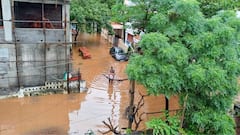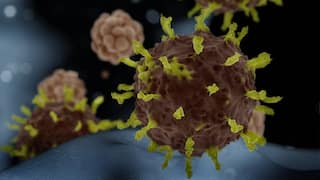Cyclone Jawad: IMD Predicts New Low-Pressure Area In South Andaman Sea To Bring Showers To Coastal Andhra, Odisha
Tamil Nadu, especially Chennai to get a breather as cyclonic depression will take away the moisture over the state and as a result, the rains are set to subside from the coastal region in the state

A new low-pressure area has been formed in the southern Andaman Sea, and it may move west-northwest and turn into a cyclone in the next 24 hours, as per the IMD statement. Later, the low-pressure is then likely to form into Cyclone Jawad on Friday, the first cyclonic storm after the end of southwest monsoon.
However, due to the low-pressure formation, storm winds at the speed of 40 to 50 kmph and sometimes at 60 kmph are expected to blow in the southern Andaman Sea today (Nov 30), and tomorrow (Dec 1) storm winds are expected to blow in the southern Andaman Sea, south-eastern and mid-eastern areas of Bay of Bengal. The India Meteorological Department has forecasted that in the next few days, the low-pressure area will intensify into a cyclone and has warned fishermen not to enter these storm areas.
Also read | ஓமிக்ரான் வைரஸ்: பரவலை தடுக்க என்ன செய்ய வேண்டும் இந்தியா?
Cyclones have been on the rise in the Bay of Bengal and the Arabian Sea since 2000. Various studies suggest that this is due to atmospheric parameters related to global warming. Due to global warming, the intensity of cyclones is increasing frequently in the oceans all over the world.
This increase, along with socio-economic impacts, is due to atmospheric parameters, especially in the atmosphere, such as high humidity, weak vertical air, and warm ocean surface temperature. Experts of Ocean Engg & Naval Architecture Department at Kharagpur IIT has explained in their study that this increasing trend of cyclones indicates the role of global warming.
Previously, Tamil Nadu experienced more than the average amount of rainfall this November comparing the previous years due to the changes in weather over the Bay of Bengal and Arabian Sea area.
Trending News
Top Headlines








































